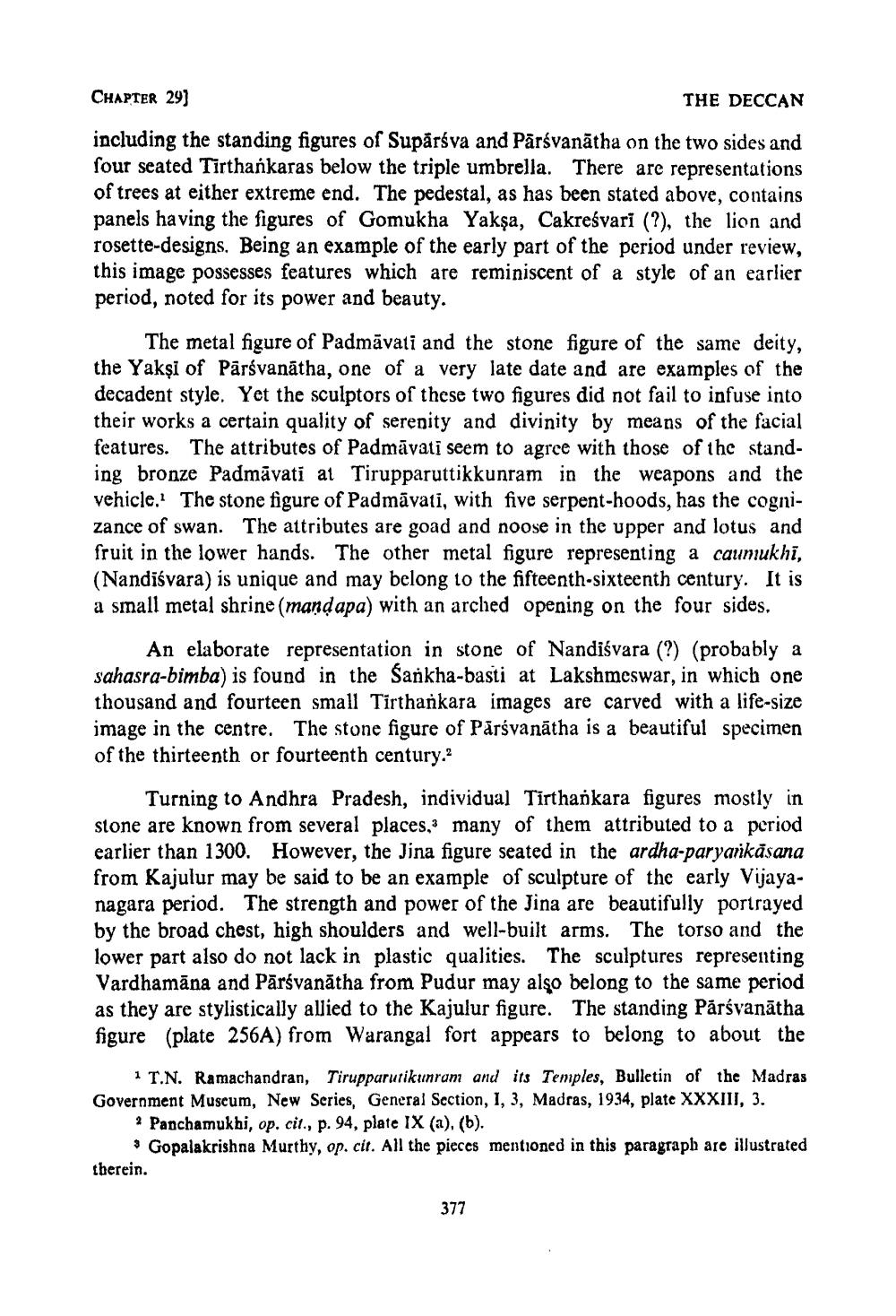________________
CHAPTER 29)
THE DECCAN
including the standing figures of Supăráva and Pārsvanātha on the two sides and four seated Tirthankaras below the triple umbrella. There are representations of trees at either extreme end. The pedestal, as has been stated above, contains panels having the figures of Gomukha Yakşa, Cakreśvarī (?), the lion and rosette-designs. Being an example of the early part of the period under review, this image possesses features which are reminiscent of a style of an earlier period, noted for its power and beauty.
The metal figure of Padmāvati and the stone figure of the same deity, the Yakşi of Parsvanātha, one of a very late date and are examples of the decadent style. Yet the sculptors of these two figures did not fail to infuse into their works a certain quality of serenity and divinity by means of the facial features. The attributes of Padmāvatî seem to agree with those of the standing bronze Padmāyati at Tirupparuttikkunram in the weapons and the vehicle. The stone figure of Padmāvati, with five serpent-hoods, has the cognizance of swan. The attributes are goad and noose in the upper and lotus and fruit in the lower hands. The other metal figure representing a cauniukhi, (Nandiśvara) is unique and may belong to the fifteenth-sixteenth centur a small metal shrine (mand apa) with an arched opening on the four sides,
An elaborate representation in stone of Nandiśvara (?) (probably a sahasra-bimba) is found in the Sankha-basti at Lakshmeswar, in which one thousand and fourteen small Tirthankara images are carved with a life-size image in the centre. The stone figure of Pārsvanātha is a beautiful specimen of the thirteenth or fourteenth century.?
Turning to Andhra Pradesh, individual Tirthankara figures mostly in stone are known from several places, many of them attributed to a period earlier than 1300. However, the Jina figure seated in the ardha-paryarikásana from Kajulur may be said to be an example of sculpture of the early Vijayanagara period. The strength and power of the Jina are beautifully portrayed by the broad chest, high shoulders and well-built arms. The torso and the lower part also do not lack in plastic qualities. The sculptures representing Vardhamāna and Pārsvanātha from Pudur may also belong to the same period as they are stylistically allied to the Kajulur figure. The standing Pārsvanātha figure (plate 256A) from Warangal fort appears to belong to about the
1 T.N. Ramachandran, Tirupparurikunram and its Temples, Bulletin of the Madras Government Muscum, New Series, General Section, 1, 3, Madras, 1934, plate XXXIII, 3.
Panchamukhi, op. cit., p. 94, plate IX (a), (b).
* Gopalakrishna Murthy, op. cit. All the pieces mentioned in this paragraph are illustrated therein.
377




